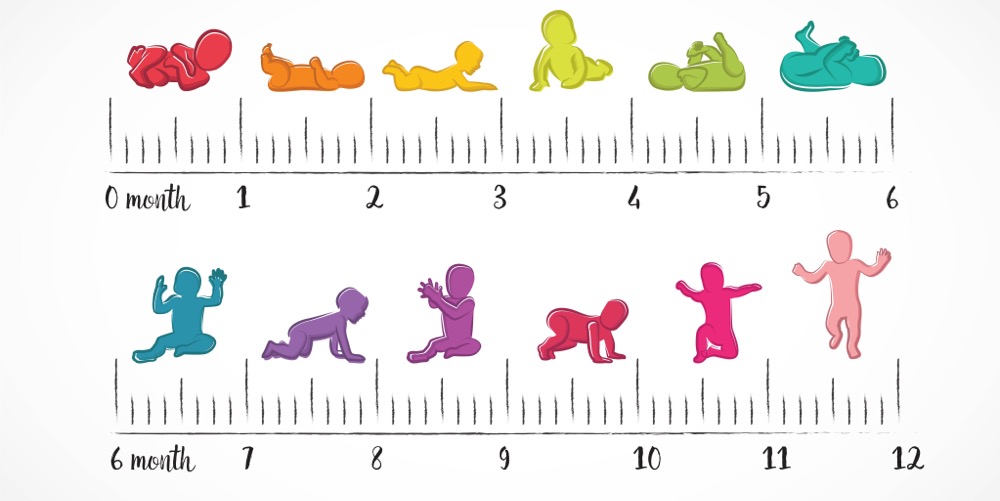
What are the Five Stages of Child Development?
Child development theories have different opinions on the exact number of stages of child development. For example, Sigmund Freud’s psychoanalytic theory described the five main stages of child development while the Swiss psychologist Jean Piaget proposed that child development happens through four main stages.
However, all child development theories agree that children go through certain stages of development on their way to adulthood. There are milestones or progressive steps within each developmental stage that most children reach before transitioning to the next stage. Failing to reach some of these milestones may signal developmental problems, so it’s important to understand what are the five stages of child development and their most important milestones.
Developmental milestones comprise five categories:
- Language skills
- Cognitive skills
- Gross motor skills
- Fine motor skills
- Social-emotional skills
The children reach these milestones through five stages of development:
- Newborn
- Infant
- Toddler
- Preschool-age
- School-age
Newborn
During the first month of life, newborns respond to the stimuli from their environment. A newborn will turn his head toward the source of the sound or your hand when you stroke his head. We will cry to communicate his needs and move his head from side to side. Also, he may be able to follow your face with his eyes. He can hear you and knows your voice. The newborn’s brain develops and grows connections while he hears, sees, and touches things around him.
Infant
Infant’s brain develops rapidly during the first year of life. At two to four months, an infant begins to babble, may be able to roll from tummy to back, recognizes familiar faces at distance and smiles spontaneously. By six to nine months, an infant can sit without support, respond to her name and show curiosity. Between nine and twelve months, a baby uses simple gestures, becomes shy with strangers and starts crawling or/and walking.
Slow development in infants may suggest developmental delays or developmental disabilities, so keep an eye out if your baby doesn’t babble, doesn’t show interest in people and toys or respond to sounds.
Toddler
Between the ages one and three, children learn to follow simple instructions, engage in pretend play, walk without help, jump and climb. They can hold a pencil, draw a circle, stack blocks, and drink from a cup. They can name objects in a picture book and know how to use simple objects. Also, toddlers can say 15 to 20 words correctly, follow simple instructions, know their body parts and names of familiar people. They can hold small objects using pincer grasp and scribble on their own.
The toddler stage is a period of rapid changes in all areas of development. Toddlers learn through play and discovery in a safe environment. Having knowledge of developmental milestones at this age allows you to encourage your child’s development and take actions if you notice any difficulties.
Pay attention if your toddler doesn’t know what the ordinary things are for, doesn’t follow simple instructions or use two-word phrases. Also, talk to your doctor if your child doesn’t make eye contact or respond to social stimulation. The Centers for Disease Control and Prevention recommends screening for autism at this age, or whenever there is a concern regarding a child’s development.
Preschool
Between the ages of three and five, children master their motor skills. A preschooler can run, jump, hop, climb, ride a bike with training wheels and do a somersault. Their thinking and problem-solving skills also evolve. She can use a spoon and a fork, dress herself, copy letters, draw a person with features, and do 3-4 puzzle pieces. A Preschooler enjoys playing pretend games and can understand stories. They can also build towers with more 6 or more blocks and count to 10. They play with other children and seek independence.
Signs of developmental delays at this stage may include a child’s inability to speak in sentences or follow 3-step commands. Also, be alert if a preschooler speaks unclearly, doesn’t make eye contact, walk, play with other children and show interest in drawing and sensory activities. Signs of developmental disabilities such as cerebral palsy may also appear during this stage of child development.
School Age
From six to twelve years, a child’s thinking and language develop significantly. Young school-age children can regularly use simple but structurally complete sentences. At the age of six, most children typically have a receptive language of 20,000 words or more. As they grow, school-age children use more complex sentences, discuss ideas, understand other points of view and give opinions.
They become more independent and confident. The older school-age children reach puberty and begin to develop sexual characteristics. Peer relationships are important to school-age children and their emotional lives become more complex. They develop emotional control, can recognize and manage their emotions and start to develop a sense of morality. Moreover, school-age children begin to question social norms and become highly sensitive to fitting in.
Keep an eye out for possible signs of mental health distress in school-age children, as these can be masked with other emotions or behavioral issues and go unnoticed. For instance, depression at this age may appear as withdrawal, irritability or aggression. Also, signs of attention deficit hyperactivity disorder (ADHD) may appear in school-age children.



Leave a Comment